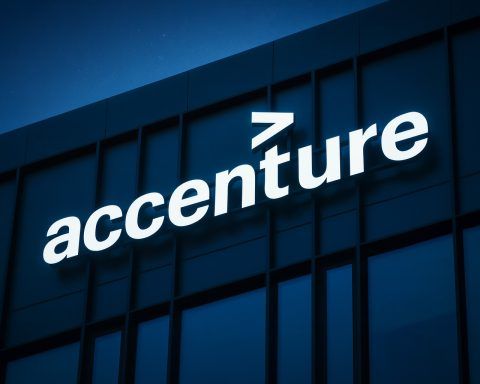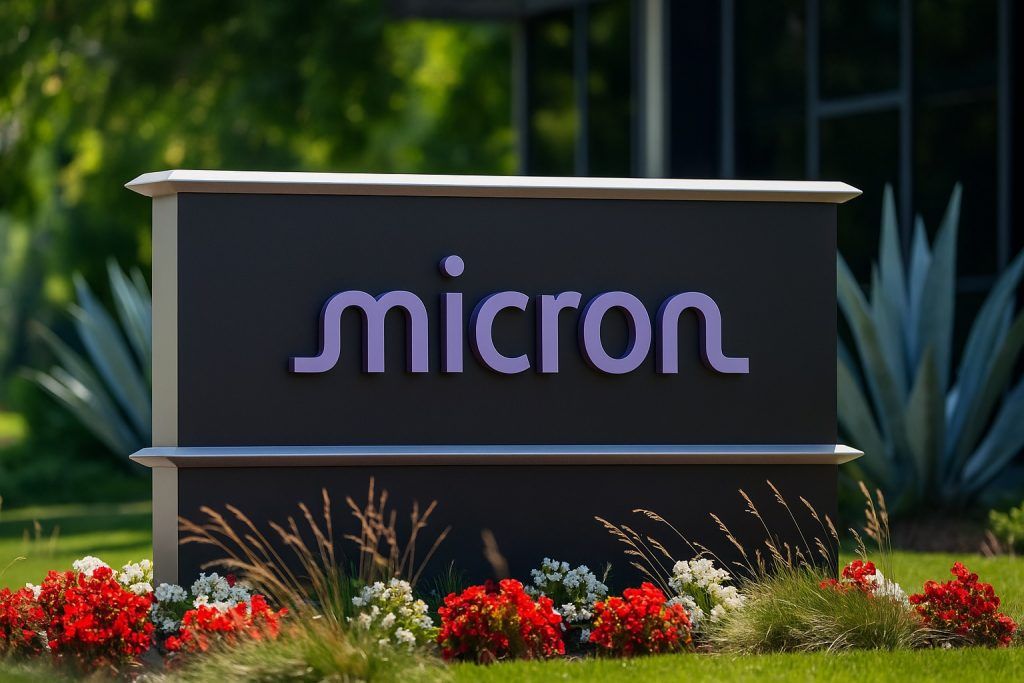Published: November 16, 2025
Quick takeaways for CRM before Monday’s open
- Share price: Salesforce (NYSE: CRM) last traded around $244, after a roughly 1.4% gain in Friday’s session. That leaves the stock about 34% below its 52‑week high of $369 and just above its recent low near $226. [1]
- Fundamentals: The company is coming off back‑to‑back record quarters in fiscal 2026 (FY26), with revenue growing ~10% year over year and non‑GAAP operating margin above 34%. [2]
- Guidance: Management still expects FY26 revenue of $41.1–$41.3 billion (8.5–9% growth) and strong cash flow, but Q3 revenue guidance is below Wall Street expectations, which has weighed on sentiment. [3]
- AI strategy: Salesforce is doubling down on AI with the Agentforce 360 platform, deeper partnerships with OpenAI and Anthropic, and three major deals: Spindle AI, Doti, and the pending $8 billion acquisition of Informatica. [4]
- Risk overhang: A sprawling third‑party data‑theft campaign tied to Salesforce customer instances has put security practices under the spotlight, even as Salesforce stresses its core platform wasn’t directly breached. [5]
- Workforce & activism: Thousands of jobs have been cut as AI agents replace support roles, while activist investor Starboard Value has increased its stake and long‑time institutional holders continue to add shares. [6]
- Wall Street view: Analysts rate CRM a “Moderate Buy” with an average 12‑month price target around $325–$330, implying roughly 30–35% upside from current levels, though targets range widely from the low $220s to about $430. [7]
Below is a deeper look at what all of that means heading into the U.S. market open on Monday, November 17, 2025.
1. Where Salesforce stock stands heading into Monday
As of the most recent trade, Salesforce shares change hands around $243–$244, with Friday’s intraday range running roughly $237 to $245 on volume of about 5.5 million shares.
Over the past year, the stock has traded between $226.48 and $369, giving Salesforce a market capitalization of about $232 billion and a trailing price‑to‑earnings ratio near 35.5. [8] That valuation prices in continued mid‑single‑digit to high‑single‑digit revenue growth plus further margin expansion.
Volatility has picked up in November: on November 6, CRM fell nearly 6%, on pace for its biggest one‑day percentage drop since April and hitting its lowest level since mid‑October before partially recovering. [9]
For traders and longer‑term investors alike, CRM is coming into Monday’s open as:
- Still in a drawdown versus its 52‑week high
- Not cheap, but trading at what several analysts describe as an “all‑time low multiple” relative to its growth outlook [10]
- Highly sensitive to any new data on AI demand, enterprise software budgets, and security fallout
2. Recent earnings: record results with a cooler growth outlook
Q1 and Q2 FY26: strong profits, AI momentum
Salesforce’s current fiscal year (FY26) is off to a numerically strong start:
- Q1 FY26: Management raised full‑year revenue guidance to $41.0–$41.3 billion (8–9% growth) and maintained a non‑GAAP operating margin target of 34%, while Data Cloud and AI annual recurring revenue (ARR) exceeded $1 billion, more than 120% growth year over year. [11]
- Q2 FY26 (ended July 31, 2025):
- Revenue of $10.2 billion, up 10% year over year
- Subscription & support revenue of $9.7 billion, up 11%
- Current remaining performance obligation (cRPO) of $29.4 billion, up 11%
- GAAP operating margin of 22.8% and non‑GAAP margin of 34.3% [12]
Salesforce also highlighted rapidly growing AI and data businesses:
- Data Cloud + AI ARR over $1.2 billion, up 120% year over year
- More than 12,500 Agentforce deals signed since launch, over 6,000 of them paid
- Over 60 seven‑figure deals in Q2 that included both Data Cloud and AI [13]
Guidance that’s good, but not perfect
Despite the strong quarter, Salesforce’s outlook has been a sticking point:
- Q3 FY26 guidance: revenue of $10.24–$10.29 billion, an 8–9% growth rate that is slightly below analyst expectations. [14]
- Full‑year FY26 guidance: revenue of $41.1–$41.3 billion, with non‑GAAP operating margin of 34.1% and operating cash‑flow growth of 12–13%. [15]
The combination of solid execution and cautious near‑term growth helps explain why CRM trades at a premium multiple but has still lagged the broader tech rally for much of 2025.
3. Long‑term Investor Day targets: $60B revenue and higher margins
At its October investor event, Salesforce laid out an ambitious long‑term plan:
- New FY30 target: more than $60 billion in annual revenue by fiscal 2030
- Implied 10%+ organic compound annual growth (CAGR) between FY26 and FY30
- Target framework that calls for meaningful operating‑margin expansion over time (several reports cite a roadmap from mid‑30s in FY26 toward around 40% by FY30). [16]
The $60B goal exceeds consensus forecasts, which were around $58.4B at the time, and excludes the planned Informatica acquisition. [17]
To support these targets, Salesforce announced:
- An additional $7 billion share‑repurchase authorization on top of an existing program, part of a total $50 billion buyback capacity [18]
- A continued focus on operating efficiency, reflecting lessons from its activist‑driven restructuring in 2023–24 [19]
For Monday’s session, investors will be weighing whether the current share price already discounts the risk that Salesforce misses those long‑term goals—or whether recent AI traction means the bar could still be conservative.
4. AI and M&A: Spindle AI, Doti and Informatica
Salesforce has been on a deal spree to deepen its AI and data stack.
Spindle AI: agentic analytics and observability
On November 7, Salesforce announced a definitive agreement to acquire Spindle AI, described as a “leading agentic analytics platform.” Spindle’s technology uses multi‑agent systems and machine learning to simulate business scenarios and forecast outcomes, complementing analytics tools like Tableau. [20]
The plan is for Spindle AI to:
- Enhance Agent Observability and Self‑Improvement for Agentforce 360
- Provide ROI forecasting and continuous optimization for AI agents
- Help enterprise customers test the impact of pricing, go‑to‑market changes, and other complex decisions more quickly [21]
The deal is expected to close in Q4 FY26, subject to customary approvals. [22]
Doti: AI‑based enterprise search for Slack
Salesforce also signed a definitive agreement to acquire Doti, an Israeli startup focused on AI‑powered enterprise search inside Slack. [23]
Key points from recent coverage:
- Doti acts as an agentic search bot that can query data from tools like Datadog, GitLab, Jira, Confluence, Notion, Slack, Salesforce and others, then interpret the results in natural language. [24]
- Analysts say Doti provides the “missing intelligence layer” for Salesforce’s vision of Slack as the primary workspace and Agentforce as the automation engine. [25]
- The deal is expected to close around January 2026, with Doti’s team joining Salesforce’s AI R&D hub in Israel. [26]
Informatica: the $8B data backbone bet
Back in May, Salesforce announced its intent to buy Informatica for about $8 billion in cash at $25 per share, with closing targeted for early FY27. [27]
The rationale is straightforward:
- Informatica brings mature data‑management, integration and governance tools
- Those capabilities are expected to feed cleaner, richer data into Agentforce and Data Cloud, improving AI agents’ accuracy and explainability [28]
None of these deals change FY26 guidance yet, but they do add integration risk and capital‑allocation questions that the market will continue to price in.
5. Agentforce 360, Slack AI and global rollout
Agentforce 360: Salesforce’s AI agent platform
At Dreamforce 2025 and in subsequent announcements, Salesforce positioned Agentforce 360 as the centerpiece of its AI strategy: a platform where companies build and manage autonomous AI agents that work alongside humans across Sales, Service, Commerce and more. [29]
Recent highlights:
- Deeper model partnerships: expanded integrations with OpenAI’s GPT‑5 and Anthropic’s Claude to power Agentforce 360, including the ability to interact with Salesforce data through ChatGPT, Slack, and Salesforce apps. [30]
- Voice and low‑code tooling: new Agentforce features include unified voice experiences and a more capable low‑code agent builder, making it easier for non‑developers to deploy agents. [31]
- Slack‑first strategy: Slack is being re‑engineered as the “agentic OS” for the enterprise, with native AI summarization, workflow automation, and deep Salesforce integration baked in. [32]
Global expansion: Mexico City, Taiwan and beyond
Salesforce is also rolling out its AI and “agentic enterprise” pitch geographically:
- Mexico City office & Global Delivery Center: a new LEED Gold office opened this week, part of a $1 billion, five‑year investment plan in Mexico that includes AI‑skills training for 100,000 students and a regional hub to support Agentforce deployments across Latin America. [33]
- Innovation Day Taipei: at Salesforce Innovation Day in Taipei on November 13, the company showcased Agentforce 360 as a key platform for accelerating enterprise transformation in Asia (full article is paywalled but confirms the event and focus). [34]
- $15 billion San Francisco investment: Salesforce also committed to invest $15 billion in San Francisco over five years, including a new AI hub and expanded AI‑focused hiring, underscoring its hometown as a core AI center. [35]
For Monday’s open, the bull case centers on whether Agentforce 360 and these global investments can re‑accelerate revenue growth and justify CRM’s premium multiple.
6. Security and data‑breach overhang
One of the biggest non‑financial storylines around Salesforce right now is security.
Nearly 1 billion records at risk – via customers, not core Salesforce
A hacking group known as “Scattered LAPSUS$ Hunters” claims to have stolen nearly 1 billion customer records from around 40 organizations using Salesforce, primarily via social engineering rather than direct exploitation of Salesforce’s core platform. [36]
Key details from independent security research and vendor reports:
- Attackers reportedly impersonated IT support staff by phone (“vishing”) and convinced employees to install a modified Salesforce Data Loader or connect malicious third‑party apps, then exfiltrated large volumes of data. [37]
- Google’s Threat Intelligence Group documented a widespread data‑theft campaign that abused OAuth tokens tied to the Salesloft Drift integration to export data from multiple Salesforce instances. [38]
- Salesforce responded by disabling Drift’s connection and revoking related tokens, emphasizing that the issue did not stem from a vulnerability in core Salesforce but from compromised credentials and integrations. [39]
Separate coverage describes millions of Qantas customer records and data from other major brands being leaked on the dark web, again linked back to Salesforce‑hosted data at customer organizations. [40]
Investor implications
For Salesforce shareholders, the main takeaways are:
- Reputational risk: Even if the platform itself wasn’t technically breached, the public narrative is “Salesforce‑linked mega‑breach,” which may pressure some customers to revisit architectures or contracts.
- Regulatory and legal exposure: Investigations, audits and potential class actions may drag on for months, and it isn’t yet clear how much blame—if any—will land on Salesforce versus customers and third‑party vendors.
- Security as a product opportunity: In response, Salesforce is leaning harder into trust and governance features in Data Cloud, Clean Rooms and Agentforce, pitching a “trusted AI foundation” as a differentiator in a crowded AI market. [41]
Security is likely to remain a top question on upcoming earnings calls, and any new disclosures could move the stock.
7. Workforce reshaping: layoffs, AI agents and sales hiring
Salesforce is also undergoing a visible workforce transformation driven by AI:
- In early 2025, reports indicated Salesforce would cut more than 1,000 jobs while hiring in AI‑related areas. [42]
- Later, CEO Marc Benioff said the company had eliminated about 4,000 customer‑support jobs, shrinking that team from roughly 9,000 to 5,000 and effectively replacing those roles with AI agents running on Agentforce. [43]
- Industry coverage notes that, simultaneously, Salesforce plans to hire 3,000–5,000 new salespeople to expand its account‑executive base. [44]
This shift has several implications:
- Margins: Automation‑driven reductions in support staff help underwrite Salesforce’s mid‑30s operating‑margin target. [45]
- Execution risk: Heavy reliance on AI agents for support raises customer‑experience questions, particularly as Salesforce markets itself as the “trusted” AI CRM.
- ESG and optics: Replacing human roles with AI while investing heavily in new offices and buybacks could draw scrutiny from policymakers, employees and activist investors.
Investors will be watching how customers react—especially big enterprise accounts that already pay Salesforce premium prices.
8. Activist pressure and institutional ownership
Salesforce remains in the crosshairs of activist investors and large institutions.
- Starboard Value (an activist hedge fund that pushed Salesforce to cut costs in 2023) has increased its stake by about 50%, from roughly 850,000 shares at the end of Q1 to about 1.3 million by June 30, 2025, amid a share‑price pullback. [46]
- Earlier activist campaigns—led by Elliott Management, Starboard, and others—pushed Salesforce to boost margins, add new directors and ramp up share repurchases, and an earlier potential proxy fight with Elliott was formally defused in 2023. [47]
On the institutional side:
- A fresh filing shows Kingsview Wealth Management lifted its Salesforce position by 8.5% in Q2, to about 165,000 shares worth more than $45 million, while several other wealth managers and hedge funds also added to positions. [48]
- MarketBeat data suggests roughly 80% of Salesforce shares are held by institutional investors, with insiders owning around 3%. [49]
In practical terms, this means:
- Management is under ongoing pressure to hit its revenue and margin goals and to justify large M&A bets.
- The shareholder base is dominated by investors who are willing and able to agitate if performance slips.
9. Wall Street sentiment: “Moderate Buy” with wide target spread
Analyst opinion on CRM is broadly positive but far from unanimous.
- MarketBeat tallies 39 analyst ratings over the past year:
- 25 Buy, 13 Hold, 1 Sell, for an overall “Moderate Buy” consensus. [50]
- The average 12‑month price target is about $325, implying around 33% upside from the mid‑$240s, with a range from $221 to $430. [51]
- Recent notes include a Cantor Fitzgerald analyst reiterating a Buy rating and a $325 price target, describing CRM as undervalued at its current earnings multiple. [52]
While methodologies differ, other forecast services (like Moomoo and similar platforms) also cluster around $330–$332 as an average target, consistent with the idea that Wall Street expects meaningful upside if Salesforce executes on its AI and cost‑discipline story. [53]
For Monday’s open, traders will be sensitive to:
- Any new analyst upgrades/downgrades tied to the Spindle AI and Doti deals
- Changing commentary around security risk and AI adoption timing
- How CRM trades relative to other large‑cap software peers in the current macro backdrop
10. Key catalysts to watch after the bell
Looking beyond the open on November 17, here are the main upcoming events and themes that could move Salesforce stock:
- Q3 FY26 earnings (December 3, 2025):
- Salesforce has confirmed it will report Q3 FY26 results after the close on December 3, followed by a conference call at 5 p.m. ET. [54]
- Expect focus on: cRPO growth, AI and Data Cloud ARR, any uptick in new large deals, margin trends, and updates on the data‑breach fallout.
- Regulatory and legal developments around the data theft campaign:
- Any formal findings or enforcement actions involving Salesforce, Salesloft, or affected customers could influence both sentiment and potential liability.
- Progress on Informatica, Spindle AI and Doti integrations:
- Investors will want clarity on closing timelines, integration costs, and how quickly these assets contribute to AI ARR and cross‑sell opportunities.
- Macro and competitive dynamics:
- Enterprise software budgets remain pressured, and Salesforce faces intense competition from Microsoft, Google, ServiceNow and others in AI and CRM. [55]
- Further activist activity or capital‑return announcements:
- Given the concentrated institutional base and history of activism, any new campaigns—or additional buyback/dividend moves—could change the narrative quickly.
Bottom line for investors before Monday’s open
Heading into the November 17, 2025 session, Salesforce stock sits at a crossroads:
- Positives:
- Strong recent earnings and margins
- A credible long‑term roadmap to $60B+ in revenue by FY30
- Fast‑growing AI and Data Cloud businesses backed by bold acquisitions and partnerships
- Massive share‑repurchase capacity and clear activist‑driven discipline
- Concerns:
- Near‑term revenue growth that’s slower and slightly below expectations
- A high‑profile data‑theft overhang involving Salesforce instances
- Execution risk from multiple large AI and data integrations
- Workforce upheaval and reputational questions around AI‑driven layoffs
For now, Wall Street views CRM as a profitable, AI‑leveraged growth story trading below its historical multiples, but also one with more moving parts—and more headline risk—than in prior cycles.
As always, this article is for informational purposes only and does not constitute financial advice. Anyone considering an investment in Salesforce should do their own research, consider their risk tolerance and time horizon, and, if needed, consult a qualified financial adviser.
References
1. www.marketbeat.com, 2. www.salesforce.com, 3. investor.salesforce.com, 4. www.salesforce.com, 5. www.reuters.com, 6. www.techradar.com, 7. www.marketbeat.com, 8. www.marketbeat.com, 9. www.morningstar.com, 10. www.tipranks.com, 11. investor.salesforce.com, 12. www.salesforce.com, 13. www.salesforce.com, 14. investor.salesforce.com, 15. investor.salesforce.com, 16. investor.salesforce.com, 17. www.reuters.com, 18. www.salesforce.com, 19. www.reuters.com, 20. www.salesforce.com, 21. www.salesforce.com, 22. www.salesforce.com, 23. www.cio.com, 24. www.cio.com, 25. www.cio.com, 26. www.cio.com, 27. www.salesforce.com, 28. www.salesforce.com, 29. investor.salesforce.com, 30. www.reuters.com, 31. www.salesforce.com, 32. www.salesforce.com, 33. www.salesforce.com, 34. www.digitimes.com, 35. www.reuters.com, 36. www.reuters.com, 37. www.fortra.com, 38. cloud.google.com, 39. help.salesforce.com, 40. www.theguardian.com, 41. www.salesforce.com, 42. www.reuters.com, 43. www.techradar.com, 44. www.storyboard18.com, 45. investor.salesforce.com, 46. www.salesforceben.com, 47. www.reuters.com, 48. www.marketbeat.com, 49. www.marketbeat.com, 50. www.marketbeat.com, 51. www.marketbeat.com, 52. www.tipranks.com, 53. www.moomoo.com, 54. investor.salesforce.com, 55. www.marketwatch.com







